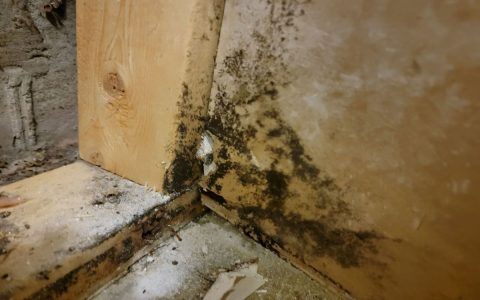Understanding the distinctions between wood rot and black mold is crucial for property maintenance and health. While both often result from excess moisture, they are fundamentally different organisms with varying impacts and remediation strategies.
Wood Rot
Wood rot is the decomposition of wood by specific types of fungi. These fungi break down the cellulose and lignin, the structural components of wood, leading to a significant loss of strength and integrity.
Key Characteristics of Wood Rot:

- Nature: Caused by decay fungi. Common types include brown rot (or dry rot), white rot, and soft rot. Each attacks wood differently.
- Appearance:
- Brown Rot (Dry Rot): Wood appears darkened, dry, and brittle, often cracking into cubical pieces. Mycelium (fungal growth) can be white, grey, or yellowish, and fruiting bodies may resemble mushrooms or flat pancakes.
- White Rot: Wood feels spongy, may appear whitish or light yellow, and can have a stringy texture.
- Soft Rot: Typically occurs in very damp conditions, causing a gradual surface deterioration, often unseen until advanced. Wood surface may look like a honeycomb.
- Impact: Primarily causes structural damage to wood. It compromises the wood's load-bearing capacity, potentially leading to building failure.
- Smell: Often a damp, musty, or earthy odor. Dry rot can sometimes have a distinct mushroom-like smell.
- Health: The primary concern is structural safety. While spores can be irritants or allergens for some, the main hazard is building collapse or damage.
Black Mold
Black mold, most commonly referring to Stachybotrys chartarum, is a species of microfungus. It is a surface mold that grows on materials with high cellulose content (like wood, drywall, paper) that have been persistently damp or water-damaged. It does not structurally decompose wood in the same way as rot fungi but indicates a serious moisture problem that could also lead to wood rot.
Key Characteristics of Black Mold:
- Nature: A specific species of mold (Stachybotrys chartarum), though other molds can appear black or dark green.
- Appearance: Typically slimy when wet and sooty or powdery when dry. Color is often greenish-black or black. It grows on the surface of materials.
- Impact: Does not primarily cause structural decay of wood, though prolonged moisture allowing black mold growth will also lead to wood rot. It can stain surfaces. The main concern is health-related.
- Smell: A strong, musty, earthy, or mildew-like odor is very characteristic.
- Health: Stachybotrys chartarum is known for producing mycotoxins. Exposure can lead to a range of health issues, particularly respiratory problems, allergic reactions, headaches, fatigue, and irritation of the eyes, nose, and throat, especially in sensitive individuals or with prolonged exposure.
Core Distinction: Wood rot fungi destroy the structural integrity of wood. Black mold primarily poses a health risk due to mycotoxin production and indicates excessive moisture that can separately lead to wood rot.
Both conditions require addressing the underlying moisture source as a first step in remediation. Professional consultation is often recommended for both, especially for extensive wood rot (structural assessment) or significant black mold growth (safe removal).










